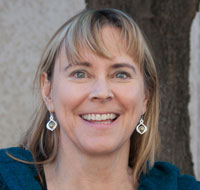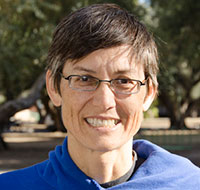1075' - Shortage on the Colorado River - Podcast Ep. 2 - Stressors on the River
 Lake Mead from the Hoover Dam - Source: Wikipedia Commons
Lake Mead from the Hoover Dam - Source: Wikipedia Commons
1075’ – Shortage on the Colorado River is a CLIMAS podcast series that explores what the first ever shortage declaration on the Colorado River would mean to those living in the Southwest.
1075 refers to the elevation of Lake Mead – in feet above sea level – that serves as the trigger for shared shortage restrictions[1]. While this has never happened before[2], after years of drought and ever-increasing demands on the river, the latest projections from the Bureau of Reclamation suggest the lake could drop below 1075[3] as soon as early 2015.
In this series, we attempt to demystify the rules and regulations that govern water use on the Colorado River and discuss what it means to the people and sectors across Arizona when a shortage occurs. This series will explore the opportunities and consequences of a shortage to construct a nuanced view of a complex issue.
- Episode 2: Stressors on the River (B. Colby, G. Frisvold, K. Morino) In this episode, CLIMAS climate scientist Zack Guido hosts three University of Arizona experts, Bonnie Colby, George Frisvold and Kiyomi Morino, to discuss water supply and demand in the Colorado River basin. This podcast explores stressors on the Colorado River Basin, how these stressors may change over time, and how these changes may affect management and behaviors across the Southwest.
 Bonnie Colby is a professor in the UA Department of Agricultural and Resource Economics. Some of her current projects involve nonmarket valuation of natural amenities, analyzing transactions costs generated by regulatory policies, evaluating the reallocation of water resources among economic sectors, economic tools to resolve environmental conflicts, and identifying strategies to promote efficient allocation of risk associated with variability in water supply and water quality.
Bonnie Colby is a professor in the UA Department of Agricultural and Resource Economics. Some of her current projects involve nonmarket valuation of natural amenities, analyzing transactions costs generated by regulatory policies, evaluating the reallocation of water resources among economic sectors, economic tools to resolve environmental conflicts, and identifying strategies to promote efficient allocation of risk associated with variability in water supply and water quality.
 George Frisvold is a professor in the UA Department of Agricultural and Resource Economics. His research interests include the economics of climate change adaptation and mitigation, water resources, renewable energy, agricultural R&D, technology adoption, and agricultural biotechnology.
George Frisvold is a professor in the UA Department of Agricultural and Resource Economics. His research interests include the economics of climate change adaptation and mitigation, water resources, renewable energy, agricultural R&D, technology adoption, and agricultural biotechnology.
 Kiyomi Morino is a research associate in the UA Laboratory of Tree-Ring Research. Her research is focused on integrating science and policy, particularly with respect to western water issues, and she is working with colleagues to develop novel ways of exploring future climate change impacts on the Colorado River using tree-ring based reconstructions of streamflow.
Kiyomi Morino is a research associate in the UA Laboratory of Tree-Ring Research. Her research is focused on integrating science and policy, particularly with respect to western water issues, and she is working with colleagues to develop novel ways of exploring future climate change impacts on the Colorado River using tree-ring based reconstructions of streamflow.
[1] Note: Mead elevation falling below 1075' in a given month does not automatically trigger shortage restrictions. The January 1st forecast from the August 24-month study is the Mead elevation value that determines if a Tier 1 Lower Basin shortage will occur. The 24-month study is a monthly report produced by the Bureau of Reclamation to keep track of Colorado River system reservoirs. So even if Lake Mead is forecasted to drop below 1075' in mid-2015, shortage is not declared unless the 2014 August 24-month study forecasts a January 1st Mead elevation at or below 1075'.
[2] Any shortage before 2026 would be the first declared shortage under the 2007 Interim Guidelines. However, there was a shortage declared in 1963/1964 when Lake Powell was filling up. Drought caused low inflows into Lake Mead and deliveries to the Lower Basin were subsequently cut.
[3] The Applied Climate Science Group in the School of Natural Resources at the University of Nebraska-Lincoln has compiled an impressive array of photos and data relating to the drop in Lake Mead levels - be sure to check it out!
Many thanks to Dr. Mohammed Mahmoud (of the Colorado River Programs / Central Arizona Project) for providing the clarifications in footnotes [1] and [2].

